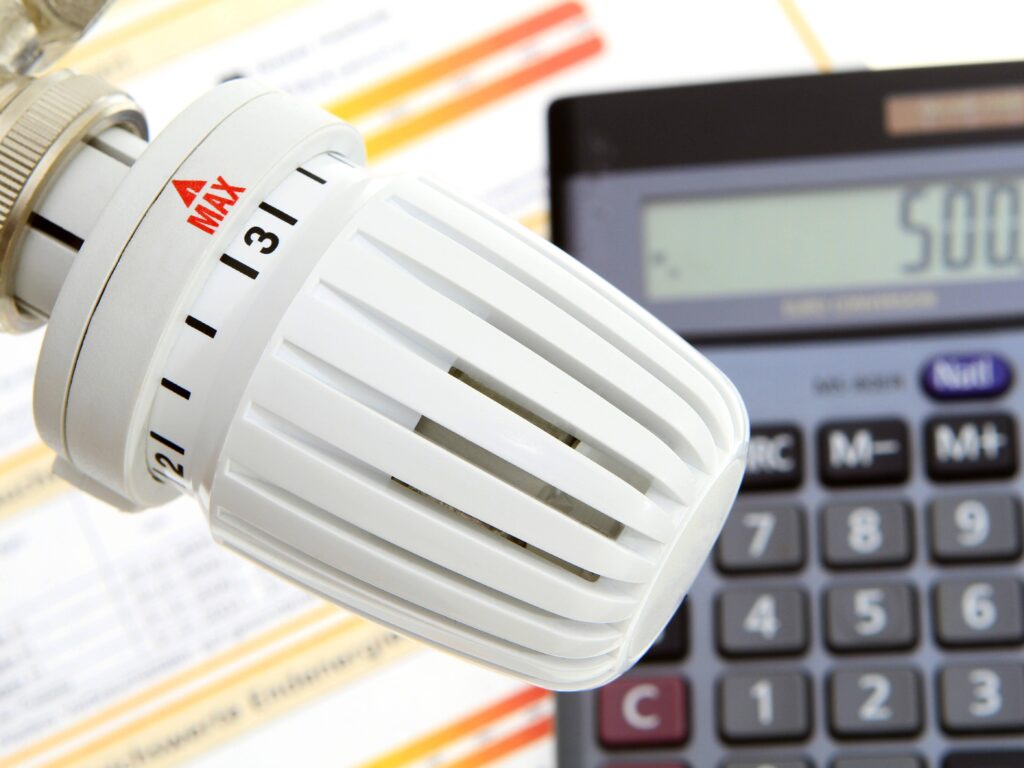With winter fast approaching, you might be thinking about getting your heating system up and running to take the edge off the chill.
You might also be wondering how to save money on your heating bill this winter.
And the good news is, there are plenty of steps you can take to save energy and, in turn, save money on heating, whether you’re a homeowner or renting.
Here, we’ll outline 10 of the best steps you can take…
1 Leaving central heating on at night: Does it save money?
There’s a school of thought that suggests leaving your central heating on a lower setting 24 hours a day saves money in the long term.
But the experts at the Centre for Sustainable Energy say this is very much a myth.
And what they say makes perfect sense.
Your boiler will continue to fire up all night to maintain a temperature that you’ll be getting no benefit from because you’ll be wrapped up in bed.
To save yourself some money, use your thermostat to set your heating to switch off 30 minutes before you go to bed and come on again a short time before you get up the following morning.
2 How to save on electric heat
If your property has electric heating, you can still take steps to save money on your bills this winter.
Electric heating is far rarer now than it used to be, but many properties don’t have access to a mains gas supply and that means electric heating is still common in these homes.
Electric heating is generally more expensive than gas central heating, but it’s still possible to use electric heating and keep your bills lower.
You should:
- Swap night storage heaters for modern electric radiators
Storage heaters lack control and can be costly to run if heat runs out during the day, whereas modern electric radiators come with thermostatic control which means you only use heat when you need it
- Programme your electric radiators
Modern electric radiators allow you to set a heating schedule as you would with gas central heating, meaning you can run your heating economically when you’re in and when you’re out
- Put the right sized electric radiator in the right room
Using an electric radiator that’s too small for a room is a certain way to increase your energy bills. Make sure you use the right specification radiator in large rooms, so your heaters aren’t over-working to get that room to desired temperature
3 How to save on oil heating costs
Around four million homes in the UK aren’t on the main gas grid and many of these use oil-based heating systems.
While oil central heating isn’t generally as expensive as electric heating, it can often be more costly than gas central heating.
But much of the cost of oil heating depends on the price of oil itself.
To save money on your oil heating costs:
- Try to buy your oil at the right time
There are a whole host of factors that affect the cost of heating oil, so it can be difficult to keep track. It’s often cheaper to bulk buy heating oil in the summer when demand is not as strong and thus prices are lower
- Turn your thermostat down
As with gas central heating, turning your thermostat down by a single degree can save you money without you even noticing the difference in temperature
- Have your boiler serviced
Maintaining your oil heating boiler should be part of your regular winter property maintenance programme and is key to getting the best level of efficiency from your heating system. Have it serviced every 12 months
4 Grants for making your home more energy efficient
The government announced in July 2020 that a new scheme aimed at improving the energy efficiency of properties in England would be launched in September.
The Green Homes Grant sees the government issue homeowners and landlords who are eligible with a voucher to have work done on their property that boosts its energy efficiency.
The vouchers are worth up to £5,000 and cover two thirds of the cost of any work carried out, although some lower income households could be eligible for up to £10,000 covering 100% of the costs.
The work you can have done is split into primary and secondary measures and you must have a primary measure installed to qualify for a secondary measure up to the same voucher value.
Primary measures include:
- Solid or cavity wall insulation, floor insulation and loft insulation
- An air source heat pump
- A ground source heat pump
- Solar thermal water heating
Secondary measures include:
- Double glazing, triple glazing or secondary glazing when replacing single glazing only
- Energy efficient doors, when replacing a door fitted before 2002
- A hot water talk thermostat
- Hot water tank insulation
- Smart heating controls
The scheme launches at the end of September 2020 and runs until March 2021. Applications can be made through the Simple Energy website.
5 Turn down your thermostat
It’s estimated that turning down your heating thermostat by just one degree could save you as much as £80 a year, according to the Energy Saving Trust.
And while that single degree might make a huge difference to your bank balance, you’ll be unlikely to notice any difference in the warmth of your home, despite the lower temperature.
6 Upgrade your boiler
If your boiler is ageing and has seen better days, there’s a strong chance it won’t be working as efficiently as it once was.
This can increase your heating bill, as your boiler will be working much harder to bring your home up to the temperature you want.
Not only that, an ageing gas boiler will more than likely waste some heat through hot gases that escape through the flue.
Modern boilers are condensing boilers, meaning they recover more heat and send cooler gases through the flue, keeping more warmth in your home.
The cost of replacing a gas boiler averages around £2,300, according to the Energy Saving Trust, so it’s not cheap to do.
But the trust estimates that an A-rated condensing boiler can save the average detached house between £170 and £315 a year on heating bills – so you’ll soon make that money back.
7 Draught-proof your home
If your home feels chilly because of cold draughts coming in from the outside, it can be tempting to turn the heating up to compensate.
This will increase your energy bills, though, and a much more efficient way to solve the issue is to seal up areas of your home where draughts are coming in.
That could include cracks in floors or skirting boards, or even your letterbox.
Seal up any cracks and line your letterbox and if you don’t have double glazing, consider replacing your single-glazed units with energy efficient glass to stop heat escaping.
8 Monitor what you’re using
You don’t know what you can’t see when it comes to heating.
And by that, we mean it’s impossible to know just how much energy you’re using – unless you install a smart meter.
Smart meters monitor your energy usage and send regular updates to your supplier, so you get accurate bills and no more estimates.
This can help you keep track of what you’re using and take steps to cut back if you need to.
9 Use retained heat from your appliances
How many times have you used your oven and then closed the door once everything is served up?
By leaving your oven door open after it’s switched off and your food is served, you’ll be pumping retained heat from your appliance into your kitchen, warming it up, which could mean you don’t need to have the kitchen radiator on.
Tumble dryers also release heat once they’re switched off and can be used in a similar way.
10 Add an extra layer (or two)
Finally, a great, and more obvious way to save energy is to simply put on an extra layer during the day or in the evening.
This might mean you can turn down your thermostat by a few degrees, which, as we’ve already established, could save you hundreds of pounds on your annual heating bill.
Further reading…
One major problem for older properties, as well as energy efficiency, is damp.
Take a look at our guide on how to damp-proof your house.





